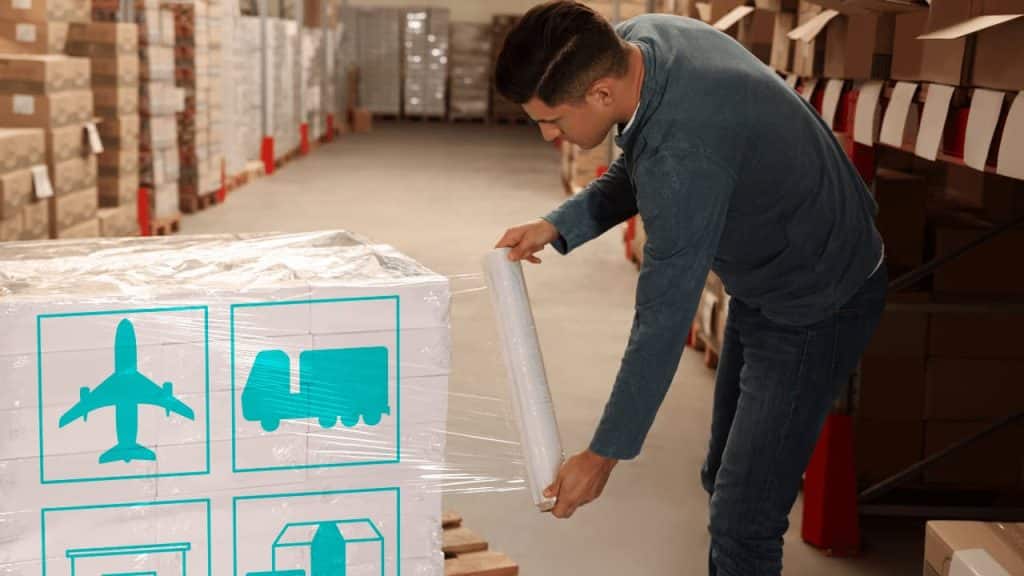If you’re considering starting a business on Amazon, understanding the Amazon FBA success rate is crucial. Fulfillment by Amazon (FBA) is a service where sellers store their products in Amazon’s fulfillment centers, and Amazon manages shipping, customer service, and returns. While success isn’t guaranteed, data shows that with the right approach, FBA can be profitable.
Although success in Amazon FBA isn’t guaranteed, available data indicates it can be quite rewarding for those who approach it correctly. A recent survey revealed that 86% of Amazon’s third-party sellers opt for FBA for order fulfillment within their businesses. Furthermore, it’s noteworthy that within the first year, 64% of sellers report profitability, with 46% of them experiencing a success rate between 11% and 25% on average through Amazon FBA.
What is Amazon FBA?
Amazon FBA, or Fulfillment by Amazon, is a service where sellers send their merchandise to Amazon’s fulfillment centers. Once there, Amazon handles storage, packing, shipping, customer service, and returns for these items.
It’s essentially a streamlined system that allows sellers to leverage Amazon’s vast distribution network and customer reach, improving order fulfillment efficiency and potentially boosting sales. This service is particularly advantageous for sellers looking to minimize logistics hassles and focus more on other aspects of their business.
The Role of Amazon FBA in E-commerce

Amazon FBA is an important part of e-commerce because it allows sellers to focus on other aspects of their business, such as product development and marketing, while Amazon takes care of the fulfillment process. It also gives sellers access to Amazon’s vast customer base, which can help them reach a wider audience and increase sales.
FBA (Fulfillment by Amazon) can really help online stores in several ways:
- Grow your business: FBA can make your store bigger and reach more people.
- Save time: With FBA, you can send products to customers faster and easier.
- Work on what matters: It lets you focus on making your products better, marketing, and getting more customers.
- Keep your products at Amazon: You can store your items in Amazon’s big warehouses and manage your stock not just on Amazon, but also on other websites.
- Fast shipping: FBA helps you send out products quickly.
- Take care of customers: Amazon handles talking to customers and returns for you.
- Quick delivery for customers: FBA lets you offer fast, free shipping, like the two-day shipping for Prime members.
- Send orders everywhere: FBA isn’t just for selling on Amazon. It can also help you send orders from other places like eBay and Shopify.
In summary, Amazon FBA is a service that allows sellers to store their products in Amazon’s fulfillment centers and have Amazon handle the shipping and fulfillment process. It is an important part of e-commerce and gives sellers access to Amazon’s vast customer base.
Analyzing the Amazon FBA Success Rate
Thinking about selling on Amazon with their Fulfillment by Amazon (FBA) service? You might be curious about how many sellers actually find success. TrueProfit found that about 46% of Amazon sellers have a success rate between 11% to 25%. Even better, 64% of them start making a profit within their first year.
Success on Amazon FBA doesn’t come the same way for everyone. It can change based on a few things. For example, what you’re selling matters a lot. Some areas, like electronics and toys, are really crowded with sellers, so standing out might take more work and money. But if you pick a niche with fewer competitors, you might have a better shot at doing well.
How you set your prices is also key. Seller Interactive suggests that keeping your prices competitive is crucial for doing well with FBA. This means you need to keep an eye on what others are charging and adjust your prices to stay in the game.
But there’s more to it than just pricing. The way you list your product plays a big role, too. Having clear, attractive listings with great photos and detailed descriptions can pull in more buyers. And don’t forget about customer service. Quick responses to questions and fixing problems fast can make customers trust and stick with you.
In short, yes, how well you do with Amazon FBA can vary, but there are steps you can take to up your chances of success. Choosing the right products, pricing them well, making your listings pop, and delivering top-notch customer service can all help you make it big on the platform.
Factors Affecting Amazon FBA Success

The success of Amazon FBA sellers hinges on Inventory Management, Product Research and Selection, Pricing Strategies, and Customer Service Excellence.
Inventory Management
Managing your inventory is crucial to your success on Amazon FBA. You need to ensure that you have enough inventory to meet demand, but not so much that you’re left with excess stock. Having excess stock ties up your capital and can lead to long-term storage fees. On the other hand, not having enough inventory can result in lost sales and a lower Amazon search ranking. Therefore, it’s important to find a balance and keep track of your inventory levels regularly.
Product Research and Selection
Product research and selection can make or break your Amazon FBA business. You need to find products that are in demand, have low competition, and are profitable. You can use tools like Jungle Scout, Helium 10, and Viral Launch to help you research and find profitable products. Additionally, you should consider factors like product size, weight, and category restrictions when selecting products for FBA.
Pricing Strategies
Pricing your products correctly is important for both profitability and customer satisfaction. You need to find a balance between pricing competitively and making a profit. You can use repricing tools like RepricerExpress, Feedvisor, and BQool to help you automate your pricing and stay competitive. Additionally, consider offering promotions, bundle deals, and discounts to attract customers and boost sales.
Customer Service Excellence
Providing excellent customer service is crucial for success on Amazon FBA. You should aim to provide fast and reliable shipping, respond to customer inquiries promptly, and provide accurate product descriptions and images. You can also use A+ content to showcase your brand and product features, and encourage customers to leave positive reviews. Positive reviews can help boost your Amazon search ranking and increase sales.
By keeping these factors in mind and implementing effective strategies, you can increase your chances of success on Amazon FBA.
Strategies to Increase Your Amazon FBA Success Rate

To hit the ground running with Amazon FBA, it’s all about smart planning and a good game plan. Let’s dive into some proven strategies that can help crank up your success rate as an Amazon FBA seller.
Optimize Product Listings
Your product listings are the first thing potential customers see when they search for products on Amazon. To increase your chances of making a sale, you need to optimize your listings with relevant keywords, high-quality images, and clear descriptions. Use tools like Jungle Scout or Helium10 to evaluate product listings with strong sales history and positive customer reviews. This will help you identify the most promising products to sell on Amazon.
Craft Content That Converts
Your product listings should be more than just a list of features and benefits. To stand out from the competition, you need to craft content that converts. This means writing compelling product titles, bullet points, and descriptions that highlight the unique benefits of your products. Use language that resonates with your target audience, and include social proof such as customer reviews and ratings.
Offer Outstanding Customer Service
Providing outstanding customer service is key to building a loyal customer base on Amazon. Respond to customer inquiries promptly and professionally, and resolve any issues or complaints in a timely manner. Offer free shipping, easy returns, and other incentives to encourage repeat business.
Tighten Your PPC Campaigns
Pay-per-click (PPC) advertising can be a powerful tool for driving traffic to your Amazon listings. To maximize the effectiveness of your PPC campaigns, you need to tighten your targeting and optimize your ad copy. Use negative keywords to filter out irrelevant traffic, and test different ad variations to see what works best.
Avoid Stockouts
Running out of stock can be a major setback for Amazon FBA sellers. To avoid stockouts, you need to maintain a steady supply of inventory and monitor your sales data closely. Use tools like InventoryLab or SellerApp to track your inventory levels and forecast demand.
Improve Product Photography
High-quality product photography can make all the difference when it comes to making a sale on Amazon. Use professional-grade cameras and lighting equipment to capture clear, detailed images of your products. Show your products from multiple angles, and use lifestyle images to help customers visualize how your products can be used in real-life situations.
By implementing these strategies, you can increase your Amazon FBA success rate and build a profitable business on the world’s largest online marketplace.
Financial Aspects of Amazon FBA

Selling on Amazon FBA can be a lucrative business if you manage your finances well. Understanding the fees and profit margins, tracking sales and revenue, and maximizing net profit are essential to succeeding in this business.
Understanding Fees and Profit Margins
To start with, it is crucial to understand the fees associated with selling on Amazon FBA. Amazon charges two types of fees: referral fees and FBA fees. Referral fees are a percentage of the item price and vary by category. FBA fees include picking, packing, and shipping orders, as well as customer service and returns. These fees vary by item size and weight.
To calculate your profit margins, you need to subtract the total fees from your item price. It is essential to factor in these fees when pricing your items to ensure that you are making a profit. Understanding these fees and profit margins is the first step in managing your finances on Amazon FBA.
Tracking Sales and Revenue
Tracking your sales and revenue is crucial to understanding your business’s financial health. Amazon provides a sales dashboard that shows your sales and revenue for a given period. You can use this dashboard to track your sales and revenue over time, identify trends, and make informed decisions about your business.
It is also essential to track your annual revenue to ensure that you are meeting your financial goals. You can use tools like Excel or Google Sheets to track your revenue and expenses over time. This will help you identify areas where you can cut costs and increase your profits.
Maximizing Net Profit
Maximizing your net profit is the ultimate goal of any business, and Amazon FBA is no exception. To maximize your net profit, you need to focus on increasing your sales and reducing your expenses.
One way to increase your sales is by optimizing your product listings. This involves using relevant keywords, high-quality images, and compelling product descriptions to attract more customers. You can also use Amazon PPC (pay-per-click) advertising to drive more traffic to your listings.
Reducing your expenses is another way to maximize your net profit. This can involve sourcing products at a lower cost, reducing your FBA fees by optimizing your inventory, and negotiating better rates with suppliers.
In conclusion, understanding the financial aspects of Amazon FBA is crucial to succeeding in this business. By understanding the fees and profit margins, tracking your sales and revenue, and maximizing your net profit, you can build a profitable and sustainable business on Amazon FBA.
Logistics and Fulfillment

When it comes to selling on Amazon FBA, logistics and fulfillment are crucial aspects that can impact your success rate. Managing shipping and handling can be a daunting task, but with the right approach, you can streamline the process and ensure timely deliveries.
Managing Shipping and Handling
Shipping and handling are the backbone of any e-commerce business, and it is no different for Amazon FBA. You need to ensure that your products are packed properly and shipped on time to avoid any delays or damages. To manage shipping and handling effectively, you can consider the following:
- Use a reliable shipping carrier that offers tracking and insurance services.
- Optimize your packaging to reduce costs and minimize damages during transit.
- Keep track of your inventory levels and plan your shipments accordingly.
- Monitor your shipment metrics to identify any issues and take corrective measures.
Fulfillment Services and Prime Shipping
Fulfillment services are an essential part of Amazon FBA, and they can help you save time and money. Amazon offers a range of fulfillment services, including picking and packing, shipping and handling, and customer service. By using these services, you can focus on growing your business and leave the logistics to Amazon.
One of the main advantages of using Amazon FBA is Prime shipping. Prime shipping is a popular feature among Amazon customers, and it can help boost your sales. When you use FBA, your products are eligible for Prime shipping, which means that they will be delivered to customers faster and at no extra cost.
In summary, logistics and fulfillment are critical components of selling on Amazon FBA. By managing shipping and handling effectively and using Amazon’s fulfillment services, you can improve your success rate and offer Prime shipping to your customers.
Challenges and Risks

Selling on Amazon FBA can be a lucrative business, but it also comes with its own set of challenges and risks. It is important to be aware of these challenges and risks so that you can mitigate them and increase your chances of success.
Competition and Market Dynamics
One of the biggest challenges you will face as an Amazon FBA seller is competition. There are millions of sellers on Amazon, and many of them are selling similar products to yours. This means that you need to find a way to stand out from the competition and attract customers to your products.
To do this, you need to understand the market dynamics and the behavior of your competitors. You can use tools like Jungle Scout or Helium 10 to research your competitors and find out what they are doing to succeed. You can also use these tools to find gaps in the market and identify opportunities for growth.
Risk Management and Mitigation
Another challenge you will face as an Amazon FBA seller is risk management. There are many risks associated with selling on Amazon, including product returns, negative reviews, and account suspensions. These risks can have a significant impact on your business, so it is important to have a plan in place to mitigate them.
To manage these risks, you need to have a solid understanding of Amazon’s policies and guidelines. You should also have a plan in place for handling negative reviews and customer complaints. This can include offering refunds or exchanges, or providing exceptional customer service to resolve any issues.
In addition, you should have a backup plan in case your account is suspended. This can include having multiple accounts or diversifying your sales channels to reduce your reliance on Amazon.
Overall, selling on Amazon FBA can be a rewarding and profitable business, but it is not without its challenges and risks. By understanding these challenges and risks and having a plan in place to mitigate them, you can increase your chances of success and build a sustainable business on Amazon.
Tools and Resources for Amazon FBA Sellers

As an Amazon FBA seller, there are plenty of tools and resources available to help you succeed. Here are some of the most popular ones:
Jungle Scout
Jungle Scout is a comprehensive tool that helps you research product ideas, track sales, and optimize your listings. With Jungle Scout, you can find profitable products to sell on Amazon, track your competitors, and get real-time sales data. The tool also offers a product database that allows you to filter by category, price, and sales rank.
FBA Course
If you’re new to Amazon FBA, taking an FBA course is an excellent way to learn the ropes. There are plenty of courses available that cover everything from product research to listing optimization. A good FBA course will provide you with the knowledge and skills you need to succeed on Amazon.
Information and Learning
There are plenty of blogs, podcasts, and YouTube channels dedicated to Amazon FBA. These resources provide valuable information and insights that can help you grow your business. By staying up-to-date with the latest trends and best practices, you can stay ahead of the competition and maximize your profits.
Tools
There are plenty of tools available to help you manage your Amazon FBA business. From inventory management to repricing, these tools can save you time and help you make more money. Some popular tools include Helium 10, Seller Labs, and Feedback Genius.
In conclusion, there are plenty of tools and resources available to help you succeed as an Amazon FBA seller. By leveraging these resources, you can stay ahead of the competition and grow your business.
Tune into the Seller Session Podcast to hear insights about Amazon success rate:
Conclusion
Now that you have a better understanding of the success rate of Amazon FBA, it’s important to keep in mind that there is no guaranteed formula for success. However, by doing your research, understanding the market, and implementing effective strategies, you can increase your chances of success.
To increase your chances of success, it’s important to focus on product research and validation, building a strong brand and website, product prototyping and manufacturing, effective shipping and customs management, and mastering PPC advertising. By focusing on these key areas, you can maximize your profits and increase your chances of success.
Keep in mind that success with Amazon FBA is not guaranteed, and it takes time, effort, and dedication to build a successful business. However, by following the tips and strategies outlined in this article, you can increase your chances of success and build a profitable Amazon FBA business.
Read more related articles: Shopify vs Amazon.
Frequently Asked Questions
Can you succeed on Amazon FBA?
Yes, you can succeed on Amazon FBA. However, it takes effort, time, and dedication. Success on Amazon FBA depends on various factors such as product selection, pricing, marketing, and customer service. You need to research and find a profitable niche, understand your target audience, and create a unique selling proposition to stand out from the competition.
Is Amazon FBA worth it as a beginner?
Yes, Amazon FBA can be worth it as a beginner. Amazon FBA provides a platform for beginners to start selling products online without worrying about storage, packing, and shipping. However, you need to invest time in learning the basics of Amazon FBA, such as product research, listing optimization, and advertising. You also need to invest money in inventory, photography, and other expenses.
Is Amazon FBA really profitable?
Yes, Amazon FBA can be profitable if you do it right. According to TrueProfit, 46% of Amazon sellers achieve an average Amazon FBA success rate of 11-25%. Moreover, 64% of Amazon sellers become profitable within 12 months. However, profitability depends on various factors such as product selection, pricing, marketing, and customer service. You need to research and find a profitable niche, understand your target audience, and create a unique selling proposition to stand out from the competition.
How much does a FBA make a month?
The amount of money you can make with Amazon FBA depends on various factors such as product selection, pricing, marketing, and customer service. There is no fixed amount of money that a FBA makes per month. However, according to Product Video Studio, over 70% of sellers enjoy a profit margin above 10%, and nearly 20% achieve profit margins of 25% or higher. So, if you sell a product that has a profit margin of $10 and you sell 100 units per month, you can make $1000 per month.
How to invest in Amazon for beginners?
To invest in Amazon for beginners, you need to create an Amazon seller account, select a product niche, and start selling products. You also need to invest time and money in learning the basics of Amazon FBA, such as product research, listing optimization, and advertising. You also need to invest money in inventory, photography, and other expenses.
How much should be invested in Amazon FBA for beginners?
The amount of money you should invest in Amazon FBA for beginners depends on various factors such as product selection, pricing, marketing, and customer service. There is no fixed amount of money that you should invest in Amazon FBA for beginners. However, you need to invest money in inventory, photography, and other expenses. You also need to invest time in learning the basics of Amazon FBA, such as product research, listing optimization, and advertising.




